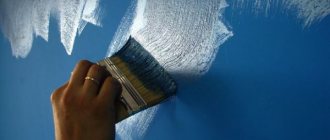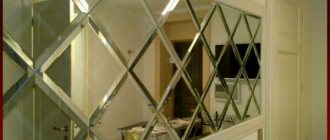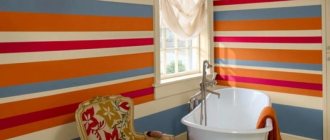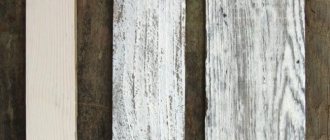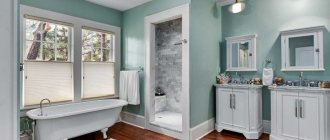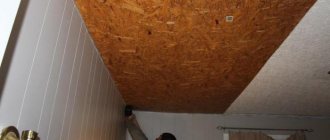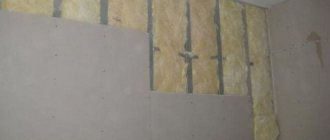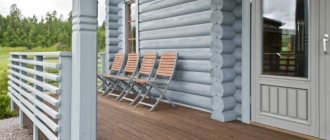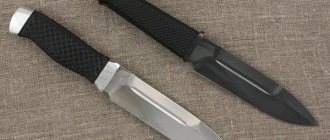How to write on a PVC boat
Self-adhesive film
As I have written more than once in my articles, self-adhesive film in 99% of cases is ideal for boats, boats, kayaks, jet skis and other water-powered equipment with a rigid side. Whether it's aluminum, steel or plastic. As for boats made of PVC, these are small inflatable watercraft, which means the side where the number or name is written will constantly be deformed, deflated, inflated, folded, twisted, etc. and so on. Accordingly, the film in places of bend will inevitably be subject to mechanical stress, which will irreversibly lead to its very rapid peeling and such a number or name will become unusable, at best, after the third deflation/inflation of the boat.
I had customers who, on principle, did not want to paint the boat, even though I warned that I had a special solvent that did not damage PVC and removed all the art without leaving a trace. However, clients, citing the fact that their RIBs and cylinders do not deflate at all, either in summer or winter, ordered self-adhesive numbers. It always ended with me making the numbers again and no longer self-adhesive, but stencils with paint. Or they immediately clarified what application technology I was using, paint or glue, because they had already encountered the fact that self-adhesive numbers fall off from the PVC boat.
PVC room
Manufacturers of PVC boats are engaged in gluing PVC fabrics every day and have extensive experience in this field. Therefore, it is not surprising that to apply the number you will be asked to stick symbols cut from PVC fabric directly onto the boat’s cylinder. Of course, if it is done by professionals, then it will look beautiful, neat and of high quality. But there is one BUT! How can I rip it off later? Imagine how the seams of your PVC boat are glued (welded). Do you think it is possible to stick them up without leaving any traces? I think the answer is obvious - it is impossible. So, if you bought a boat for life, you will not change the engine, the owner, and nothing will change in our state, then this method is quite acceptable.
Removable room
Another common way is to hang a banner on strings. Print the number on the banner at the advertising agency, make eyelets (holes) in it and tie it to the rail and fender in some way. This design looks, to put it mildly, not beautiful. Plus, this method contradicts GOST, which states that the number must be applied directly to the side of the vessel. That is, the number cannot be removable.
Draw the number with a permanent marker
I want to highlight this method separately! This is the cheapest and fastest option. You can take it directly in front of the inspector and draw a number on the cylinder with a marker. But what will this lead to? Firstly, I have only seen white, the color of the marker (for a flag, number or name) in a liquid state, which begins to crack and crumble when dry (video on my YouTube channel). That is, you will draw the number, flag or name of the boat in white, then fold the boat, and unfolding it will be a “headache”, because the whole boat will be covered in marker crumbs, as if in dandruff, and oh, quite problematic. Secondly, the black permanent marker eats into the PVC fabric so that it cannot be removed by any solvents. I often have to communicate with customers who are faced with this problem. My original solvent also does not erase the permanent marker and I have to completely paint over the old number and apply a new one on top. Let me make a reservation right away that this technology is not for the faint of heart and takes two or even three days. But for this you can thank the person from whom you purchased the boat with the numbers written in permanent marker. I, of course, send the technology itself to my customers and tried to make it as easy as possible for implementation. However, this is a painstaking task, but the result is a gorgeous tuning.
Original paint for PVC boats
Finally got to the technology that I have been using for several years, and all the feedback from my clients says that I am doing everything right.
German paint Maroplan PL is easy to apply, dries quickly, after 24 hours you can use water. It stretches when the balloons are inflated and contracts when deflated. Does not print when folded. When selling a boat, it can be removed without leaving a trace or damaging the boat using a solvent from the same company. I chose this one and give a 2-year guarantee that the paint will retain its color and hold up well. More details https://gimsnomer.ru/products/kraska-dlya-lodok
All the technologies described above have their place and are used to one degree or another by owners of PVC boats. Someone even used duct tape to put a number on my memory. My task is not to eradicate all other methods of applying numbers, but that if a person contacts me, then he will not have problems with the State Inspectorate for Small Vessels (GIMS) due to an incorrectly applied registration number. I have been working for more than 6 years and during this time all my customers have successfully passed technical inspection without any complaints about their license plates.
My technology consists of applying a number directly to the side of a PVC boat through a stencil made of vinyl film. The number is applied with original German paint, which is intended for application to PVC materials and awning fabrics, using tampon screen printing. A stencil made of self-adhesive vinyl film prevents paint from flowing into the porous grooves of the PVC fabric structure, thereby leaving smooth, clear, beautiful borders of the characters when the stencil is removed.
I provide detailed instructions for applying a stencil and painting the number to my customers individually, since each PVC boat is a new task every time.
If you have any questions about painting a PVC boat, call me
+7-904-38-88-448.
Free calls Viber/WhatsApp Delivery throughout Russia.
Choice
There are many paints on sale, both expensive, imported, and more budget-friendly domestic ones.
It’s possible that cheap paint will work well, but people are usually afraid to try, because before that a lot of work has been done on cleaning and priming, a lot of effort and money have been spent, so many try to paint only with materials that have been tested by experience or those that were recommended.
Paint and paint systems Duxone, HEMPEL, Tikkurila have proven themselves well.
The advice is the following: before making a decision to buy paint, it is better to look at the forums to see who painted it or not and read reviews about the quality.
When choosing a paint color for your boat, keep in mind that paints fade over time and, strange as it may seem, white fades the most. But rich colored paints are more durable
High-quality paints fade more slowly.
Paint requirements
The main requirement for PVC paint is a high adhesion rate (adhesion to the surface). Polyvinyl chloride differs from wood, brick and concrete in that it has a very smooth and slippery surface, the structure is quite dense and hard, as a result of which plastic cannot be painted with any type of composition. The paint must have the following characteristics and properties:
- resistance to moisture, water;
- high strength;
- resistance to mechanical damage;
- preservation of the shade throughout the entire service life;
- resistance to ultraviolet rays;
- the composition must be environmentally friendly, safe for humans, without toxic, poisonous components that could be released into the air during heating;
- resistance to temperature changes;
- long service life;
- large selection of shades;
- the ability to give the object being painted some kind of texture.
In addition to all the above properties, it is important to choose a composition that you can easily paint with your own hands at home.
Our specialists
Pavel Shavarin Technical Director
Vadim Gordeev Electrician, argon-arc welding specialist
Ivan Uvarov Painter, polishing specialist
Oleg Gordeev Specialist in re-equipment of boat cockpits
- Based on your request, we can arrange for a technician to travel to the specified address.
- If you do not have the opportunity to bring the boat to us, we ourselves will organize delivery using our own transport.
| No. | Name of service | Price |
| 1 | Color of the boat | from 50,000 rub. |
See all prices
Features of painting boats
Boats are made from a variety of materials - PVC, wood, their base can be rubber, fiberglass, but the most popular and high-quality boats are those made of aluminum. Modern boats are made from duralumin (duralumin) - a high-strength aluminum alloy with the addition of magnesium, copper and manganese. The weight of a duralumin yacht or boat is small, but the products are very reliable, resistant to damage, and easy to transport and launch.
The technique of painting boats has its own specifics. The paint should increase the service life of the coating, at the same time have high moisture resistance, and be suitable for swimming in different types of water bodies. It is equally important that the paint and varnish material gives the product an attractive appearance and enhances its aesthetic qualities. If the finishing varnish usually has a transparent texture, then the paints are tinted in a variety of colors. On some types of bases, paint is difficult to apply and rolls off, so you have to increase the level of adhesion in different ways.
Aluminum boats
Painting of aluminum watercraft can be done using two methods:
- Powder. For this purpose, powder paints are used, which are applied to the body after it has been cleaned and chemically prepared.
- Anodizing. It involves the creation of an oxide film on the surface of aluminum by galvanic method (anodic polarization in a conductive medium). At home, such coloring is possible, but special equipment is required.
The first method is difficult to implement. After cleaning and preparation, paint is applied and the boat or its parts are placed in a thermal chamber. There, under the influence of high temperature, the powder melts, forming a very strong protective layer. The service life of objects after painting will be as long as possible.
If small defects appear on the bottom or sides, you can get rid of them using a special pencil. The difference between the two listed methods is the resulting color. If, when anodizing, the boat will have a beautiful gray tint, then with powder coating you can get any desired tone.
PVC boats
Such products are very popular among fishermen because they are cheaper than aluminum ones. They replaced inflatable products. They need to be painted with paints and varnishes that are resistant to mechanical and chemical influences. Also, paints must be quick-drying, impart high strength to the coating, and have water-repellent properties. You should purchase paints and varnishes for rigid polyvinyl chloride, profiles, and other PVC products.
In industry, a new paint and varnish material is used for such objects - PaliPlast RP 2040. The boat can be painted with it after careful preparation and degreasing using a PVC cleaner.
Wooden boats
With the advent of modern materials, wooden boats are losing their position, but are still used. Some people construct wooden watercraft themselves, because it is inexpensive and reliable. But such objects rot from constant exposure to water, crack, and fail. Wood should be painted regularly, at least once every 1-2 years.
First, the boat needs to be tarred, which is long and difficult. Next, the body and bottom are sanded with sandpaper to make it smooth. Smooth surfaces are painted with a roller; in hard-to-reach places, they are tinted with a brush. At least two coats of paint should be used to make the coating more durable. The first layer will be thin, the subsequent ones will be thicker, so there will be no streaks left on the boat. Typically, paints based on lead white with the addition of colors are used. Finally, varnishing is performed. Metal parts are painted with red lead and glyphthalic enamels.
Plywood boats
Plywood has poor resistance to water, so without body protection the material will quickly delaminate. First, drying oil is applied to the plywood, and then it must be primed. There is only one paint that can protect the base of the boat - epoxy. Paintwork will make the plywood harder, stronger, and its service life will increase. It is better to do the painting yourself - hiring professionals can cost more than the price of the boat itself.
Boat painting
As the boat is used, a thick coating of bacteria and small aquatic organisms appears on its bottom, which causes a decrease in speed, malfunction of instruments and a number of other problems. To avoid troubles, it is recommended to apply special alkyd or epoxy paints below the waterline. They are also called “antifouling” or “antifouling” because they do not allow plaque to form.
Before applying the composition, the body is cleaned with a special remover, and the surface is examined to identify defects and damage. If they exist, the boat is first repaired. Then the base is primed and covered with antifouling. It is better to use epoxy coatings with the addition of copper oxide - their price is higher, but the products must be used once every few years. Application is carried out with a roller, brush or spray gun; in industry, the airless spray method is used.
Caring for a plastic boat
Boats made of fiberglass and other types of plastic lose their visual appeal and shine as they serve. But they do not rot and there is no need to renew the color on their bottom and body every year. The disadvantages include the inability to paint the product at home - you will have to contact specialists, which is expensive. Therefore, such objects are painted only when they are significantly worn out, when there is no other way out.
Floating vessel painting technology
Painting a boat yourself is a complex and expensive procedure. To achieve the creation of the most durable coating, it is necessary to properly prepare the vehicle and purchase all the necessary equipment for the job.
Removing old paint
The first stage is the removal of the old coating and the simultaneous removal of dirt, as well as adhering algae. The surface is cleaned using a special remover. It is applied over the entire staining area in a thin layer and left for 30 minutes. After this, the wash is removed with a cord brush.
The cleaned area is washed twice with washing powder, wiped and allowed to dry naturally.
The best option is to leave the boat upside down in the sun.
Cleaning rust
For metal cases, it is important to go through such a preparation stage as rust removal. To get rid of traces of corrosion, it is necessary to use special converters. Apply the product to the surface and wait 1 hour.
At this time, particles of the applied converter react with traces of corrosion and form a white foamy substance. It is removed with a rag or brush.
Putty and primer
Puttying is an irreplaceable step that has some features. Applying too thick a layer of primer changes the specific gravity of the hull, making the craft too heavy. For some boats, exceeding these values causes a list to occur when they are put into the water.
This can be avoided if you choose the right primer mixture and putty composition. Do not apply dense layers, and you must use sandpaper at each stage of processing.
Before processing the body, all irregularities and protrusions are removed. Then they take putty. First of all, it is applied to areas where unevenness is noticeable or where panels overlap.
It is best to use putty that contrasts with the main shade of the boat. This will allow you to see how much product has been applied and control its amount.
After applying the putty over the entire surface, they begin to search for subtle defects and irregularities on the body. To do this, use wide metal rulers and glass cuttings. After identifying irregularities, treat them with a spatula of maximum width.
The final stage is the elimination of minor defects. They are covered with small spatulas. The maximum number of applied layers of putty is 5 or 6.
After creating the putty finish, all height differences between layers are processed with sandpaper No. 120, 240 or 360.
The next stage is priming. For it, special primers of gray or white color are purchased. Primer is the basis for the paint material, so it is best to use a mixture that is compatible with the paint of choice.
Reference! The result of puttying is a smooth surface that reflects the glare of the sun.
Painting the sides and bottom
To paint the boat, choose a warm, dry day with a humidity of about 60%. 10-20 minutes before painting, the entire surface of the primed body is additionally treated with fine-grained sandpaper. This technique increases adhesion between the materials to be used. The paint is applied with a spray gun, roller or brush. The maximum number of paint layers should not exceed three.
The bottom is painted first. This area bears the greatest load. The bottom wears out faster than other parts of the boat. An anti-corrosion compound with additional moisture-proof properties is used to coat the metal.
The bottom is covered to the waterline, then the sides begin to be covered. It is most convenient to apply paint to the sides using a spray bottle. It lays down evenly and does not create drips or uneven strokes.
Painting the inside of a boat
After the bottom and sides are completely dry, begin finishing the interior parts of the boat. For this purpose, acrylic paints are chosen; yacht varnish is used to create a glossy shine on wooden surfaces.
If the parts located inside the body can be pulled out, then they are painted separately, and after the paint has completely dried, they are reassembled.
Painted surface protection
The final stage of repair is to protect the painted surface from microorganisms living in the aquatic environment. Lead verdigris is used on all floating craft, except aluminum ones. This paint is formed by a complex chemical reaction between copper and acetic acid.
To protect the aluminum body, special paint is used, which contains toxic substances. The protective layer is applied after the bottoms and sides have completely dried. Most often, a spray gun or a wide brush is used for this.
Types of housing materials
The choice of materials depends on what material the body is made of and what budget is allocated. What types of boat hulls are there? Let's look at them in descending order of popularity.
Housing made of duralumin alloy. These are Soviet riveted boats, which are still found in abundance on reservoirs. There are several types of alloys: D1AT - Kazanka, Oka-4 is made of D16T, the Ob motorboat uses D16 in combination with D1. They were painted with VL-02 primer and XV-16 paint.- Welded aluminum-magnesium alloy housings. For example, Soviet motor boats Crimea, made from AMg5. Modern boats are welded from AMG5M. In new buildings, instead of painting, PVC film is mainly used.
Fiberglass housings made of fiberglass and its varieties, impregnated with polyester (less commonly, epoxy) resin. A gelcoat dyed in the mass is used as the outer layer.- Plywood bodies. Mostly self-built. They are based on waterproof plywood covered with fiberglass impregnated with epoxy resin. They are painted with epoxy paints, for example, EP-140.
- Inflatable boats made of rubberized fabric, PVC and Hypolon. Rubber boats are becoming obsolete; boats made from high-poly rubber are almost never seen due to the high cost and peculiarities of repair. The most popular boats are made of PVC. The material of the cylinders is dyed in the mass. To change the color, it’s easier to change the boat, since now the range of colors, including camouflage, is quite large.
- Boats made of thermoplastic and polyethylene are practically never found on Russian water bodies. Thermoplastic is used in some Polish and Finnish boat models, while polyethylene is good for small hunting boats and kayaks. Boats made from these materials are painted in bulk and do not require painting during operation.
Steel hulls, as a rule, are used on inexpensive boats of the “Volga party” type and expensive cruise hulls. The owners of the former are satisfied with oil paint, while the latter usually entrust painting to specialized shipyards.- Wooden cases. In the central region they are practically not used. They are painted with resin, varnish or oil paint depending on the purpose.
In this article we will briefly look at how to paint a boat made of aluminum alloy and fiberglass.
Polyurethane-acrylic paints
These dyes fully comply with all the necessary characteristics, these compositions are made on a water basis, they are often used to paint PVC, for example, plastic windows or other structures. Polyurethane-acrylic mixtures create a uniform coating that is resistant to scratches and other defects. The dye dries quickly enough on the PVC surface; if desired, you can tint the composition yourself. Thanks to these dyes, you can easily and quickly paint PVC, and it is possible to create any textured effects if you add special ingredients to the base paint.
Polyurethane-acrylic paints are made in a huge range of colors; the catalog contains more than two thousand different shades. In addition to traditional colors, manufacturers offer:
- pearlescent paints;
- with sparkles;
- metallic
Using such extraordinary dyes, you can paint any PVC surface in a unique and original way.
Design requirements
Fiberglass is a unique material and is perfect for homemade boat production. Convenience, lightness and durability are the main qualities of this material. The same applies to the design. Building fiberglass boats is easy; the main thing is to glue the fibers together correctly to make the boat waterproof on the water.
The following requirements apply to the design:
- Maximum rigidity of the boat sides. The thickness of plywood used is at least 1.2 cm, applied in a double layer.
- The edges of the sides must be perfectly smooth, otherwise the boat will be unstable on the water. For this purpose, the sides are puttied.
- Fiberglass placed in molds must be lubricated with wax.
- Air should not accumulate in the material, so fiberglass is applied to the matrix layer by layer, in 5-6 layers.
A fiberglass boat needs to be puttyed and painted so that it is well stored in the future and does not succumb to infection by mold and mildew.
Preparation before painting
Before painting any PVC product, for example, a window sill, plastic windows, or anything else, it is important to properly prepare the surface. Preparation includes:
- dismantling all structural elements that will interfere with painting. For example, you need to remove the tide, tulle, curtain, blinds, mosquito net and other items from the window;
- any contaminants are removed from the surface, for example, dust, cobwebs, debris, dirt, etc.;
- grease stains are removed using a solvent;
- Construction (painting) tape protects all fittings, rubber seals and other elements so that paint does not get on them. When the painting solution has dried, the masking tape must be removed immediately, otherwise it will be much more difficult to remove it after a few days;
- It is advisable to cover the glass with cellophane film, or you will have to remove the paint from the glass surface with a rag immediately before it dries.
To carry out high-quality, effective cleaning, degrease the surface and remove static stress from it, you can purchase a special activator cleaner in the store, which is designed specifically for PVC. This cleaner is applied to a cloth or rag, and the entire surface is thoroughly wiped with it. After wiping, the composition should completely evaporate, this usually takes about 10 minutes, after which you can paint the PVC with the chosen paint.
If there are scratches, any defects, chips or roughness on the surface, they are covered with a special putty compound, after which the structure is sanded with fine-grained sandpaper. After sanding, it is recommended to treat the PVC with a primer mixture. If you have experience and skills in the field of repair and finishing work, then you can do the filling and sanding yourself, but if you lack experience, it is advisable to seek the services of specialists.
How to paint a boat - a guide: selection of materials and main stages of work
The paint applied perfectly with a slight shagreen patch. I got rid of the shagreen by sanding. Thus three layers of paint were applied.
After the applied paint had dried, I carefully removed the masking tape, occasionally using a paint knife. In order to safely paint the sides, the painted bottom of the boat was sealed with the same masking tape. Here I used International Perfection New
. I liked the paint for its bright and rich color. Among the features of this paint, I note that it is extremely fluid. The paint dries quite quickly: at a temperature of +25 °C in about three hours. When the paint dried, the body looked like a mirror with an almost imperceptible roughness.
Aerosol cans
If you need to paint a small area of a window or other PVC product, you can purchase paint and varnish material in a can. This form of release is very convenient, thanks to it the paint is reliably protected from air penetration, so that a film never forms on the surface of the composition. Aerosol cans have many advantages:
- ease of transportation;
- You can easily and effortlessly paint small parts and hard-to-reach areas;
- no need to use any additional tools, such as a spray gun or brush;
- dyes in cans have an increased adhesion rate.
Aerosol paints are often used to process PVC automotive parts. In order for the paint coating to be uniform, without drips or gaps, certain skills and dexterity are needed, so first it is important to practice for a few minutes on some unnecessary product, after which, having gained a little experience, you can begin the main painting.
Painted surface protection
Although polyurethane-acrylic and polyurethane paints and varnishes adhere well to polyvinyl chloride products, experts recommend additional protection of the painted dried layer. To do this, use special water-based varnishes, used specifically for plastic. In addition to protection, such varnishes create an attractive decorative layer, making the product shiny and beautiful.
You can varnish any painted structures, for example, metal-plastic windows or window sills, especially in places where the products are exposed to adverse factors and aggressive substances. It is advisable to varnish windows from the outside, where they are not affected by high and low temperatures, ultraviolet rays, and precipitation. You can apply the varnish with a regular brush; this does not require any skills or knowledge, so even a beginner in the field of painting can cope with this procedure.
Important! If you need to protect PVC pipes, window sills and other products located near an open fire, it is recommended to paint the surface with a special fire-retardant paint, which is also used for metal structures.
Recommendations from the experts
Those who are repairing a boat for the first time have many questions about working with paint and varnish materials.
Advice and recommendations from experts:
- It is recommended to prime aluminum boat hulls using phosphating primers. 30 minutes before treatment, a thinner or zinc white is introduced into them. In addition, it is recommended to paint aluminum or duralumin cases with zinc white with a linen base. If you galvanize a duralumin body with two layers of white, a durable protective coating will be formed on its surface, which will isolate the metal from exposure to water.
- Nitro paints are applied only to degreased metal, otherwise the layers will not adhere to each other. White spirit is used to degrease the surface. After applying this degreaser, you do not need to wait for the surface to dry completely.
- For PVC boats, one-component water-based polyurethane paint is excellent. It gives a semi-gloss finish and can withstand up to 30 launches without loss of quality. Craftsmen advise using colors of soft shades to extend the life of the material.
- An interesting option for creating an original pattern on the bottom is to use natural stencils. This method involves applying herbs and leaves to the body in a chaotic manner, then applying several layers of enamel. This approach creates a beautiful and unusual pattern on the surface.
- It is recommended to remove oil stains from the surface of the case using a soap solution prepared from dishwashing liquid.
- To place the boat, special boat racks are used. If a rack is not available, you can place the boat on cinder blocks placed along the width of the boat.
- If the painted inflatable boat gives a glossy shine, then these areas can be powdered with baby talcum powder. It will remove the glare.

